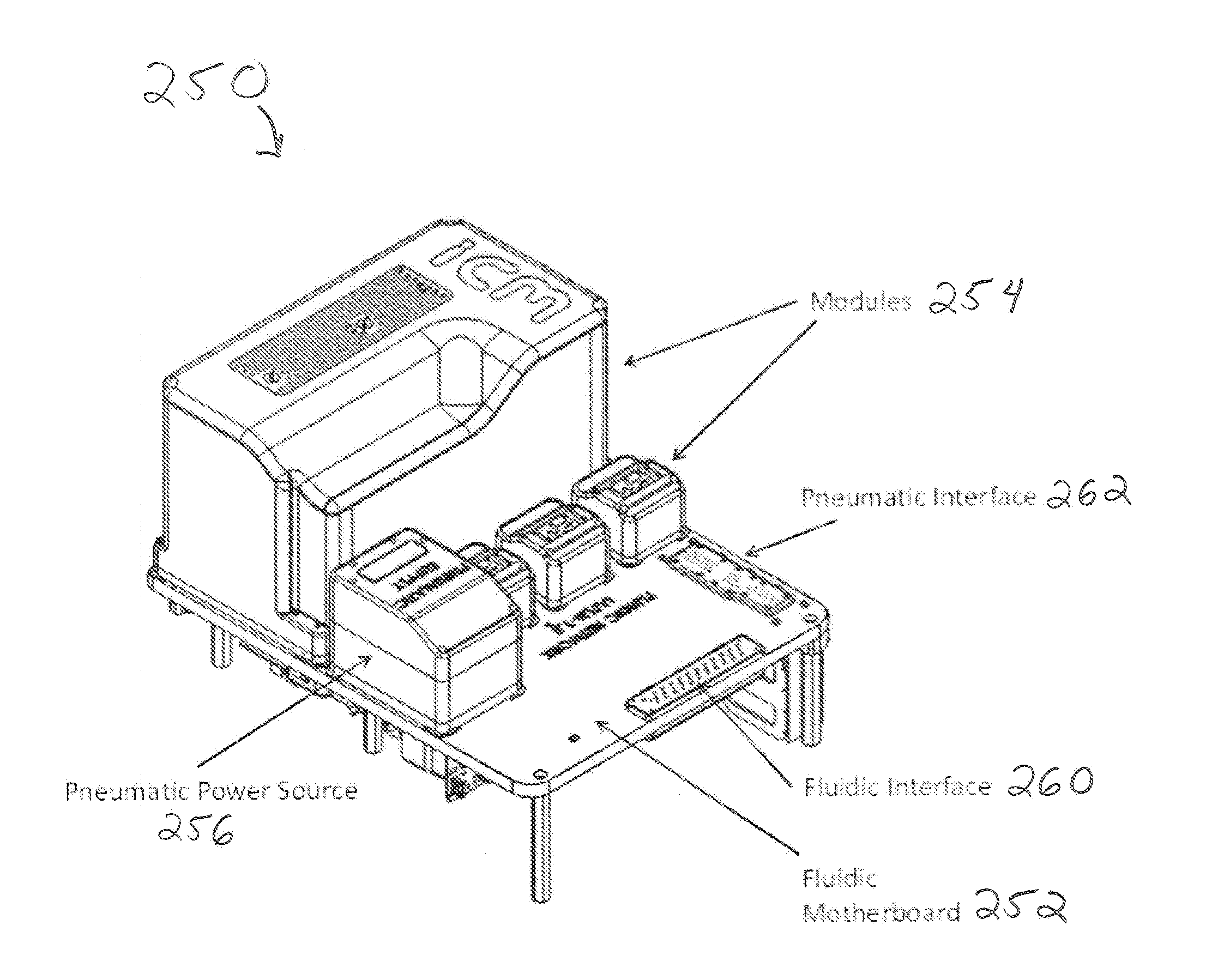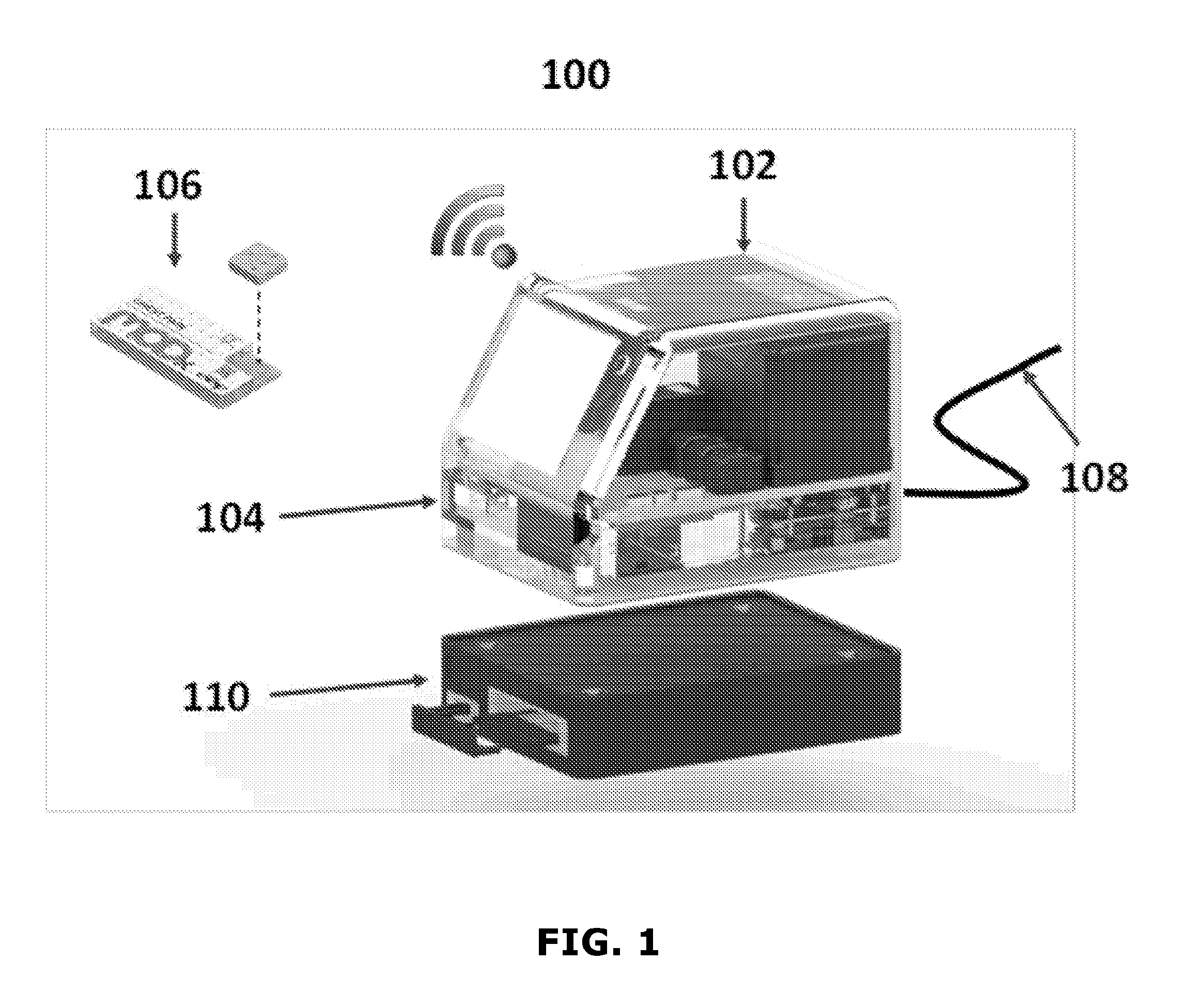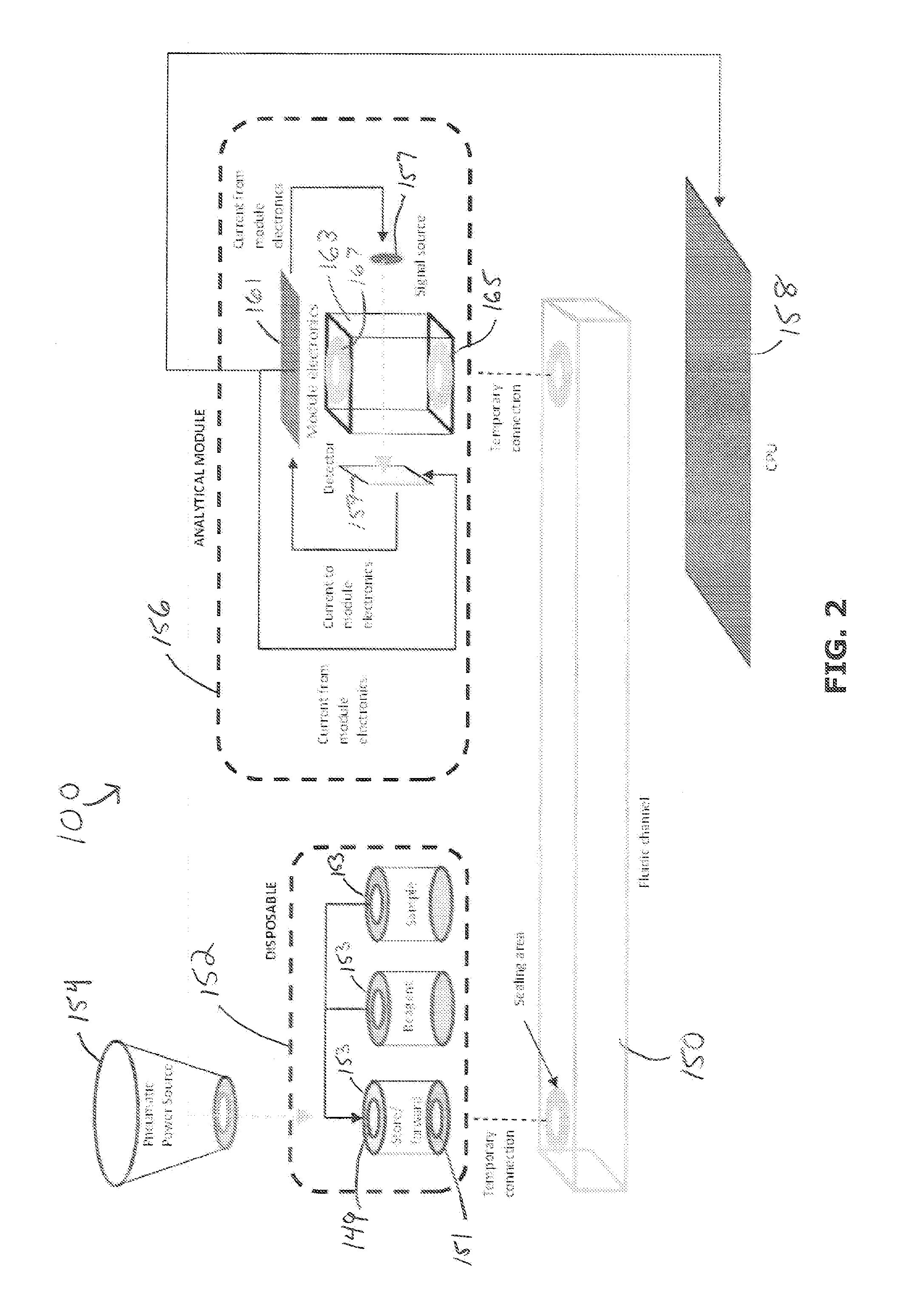Modular Instrumentation for Analyzing Biological Fluids
a biological fluid and module technology, applied in the field of analytical systems, can solve the problems of many physician office laboratories closing, many physician office laboratories being closed, etc., to achieve convenient service and/or upgrade, and efficient and distributed diagnostic infrastructure
- Summary
- Abstract
- Description
- Claims
- Application Information
AI Technical Summary
Benefits of technology
Problems solved by technology
Method used
Image
Examples
Embodiment Construction
[0073]FIG. 1 shows an example of a modular analytic system 100. As illustrated, the modular analytic system 100 includes a central unit 102 which houses a fluidic network and various modular components as will be described in greater detail below.
[0074]The modular analytic system 100 is adapted to receive a number of inputs and outputs. On a front face of the central unit 102 of the modular analytic system 100, there may be a slot 104 or other type of receiving area for the selective introduction of a sample preparation unit such as the assay cartridge 106. The assay cartridge 106 may receive, contain, and store one or more samples and may receive, contain, and store one or more reagents for performing assays of the sample(s). Sample(s) may include, for example, any one of a number of types of biological fluids including, but not limited to blood, urine, saliva, and so forth. The samples and / or reagents include one or more samples and / or reagents of the same or different types. For ...
PUM
| Property | Measurement | Unit |
|---|---|---|
| size | aaaaa | aaaaa |
| size | aaaaa | aaaaa |
| size | aaaaa | aaaaa |
Abstract
Description
Claims
Application Information
 Login to View More
Login to View More - R&D
- Intellectual Property
- Life Sciences
- Materials
- Tech Scout
- Unparalleled Data Quality
- Higher Quality Content
- 60% Fewer Hallucinations
Browse by: Latest US Patents, China's latest patents, Technical Efficacy Thesaurus, Application Domain, Technology Topic, Popular Technical Reports.
© 2025 PatSnap. All rights reserved.Legal|Privacy policy|Modern Slavery Act Transparency Statement|Sitemap|About US| Contact US: help@patsnap.com



